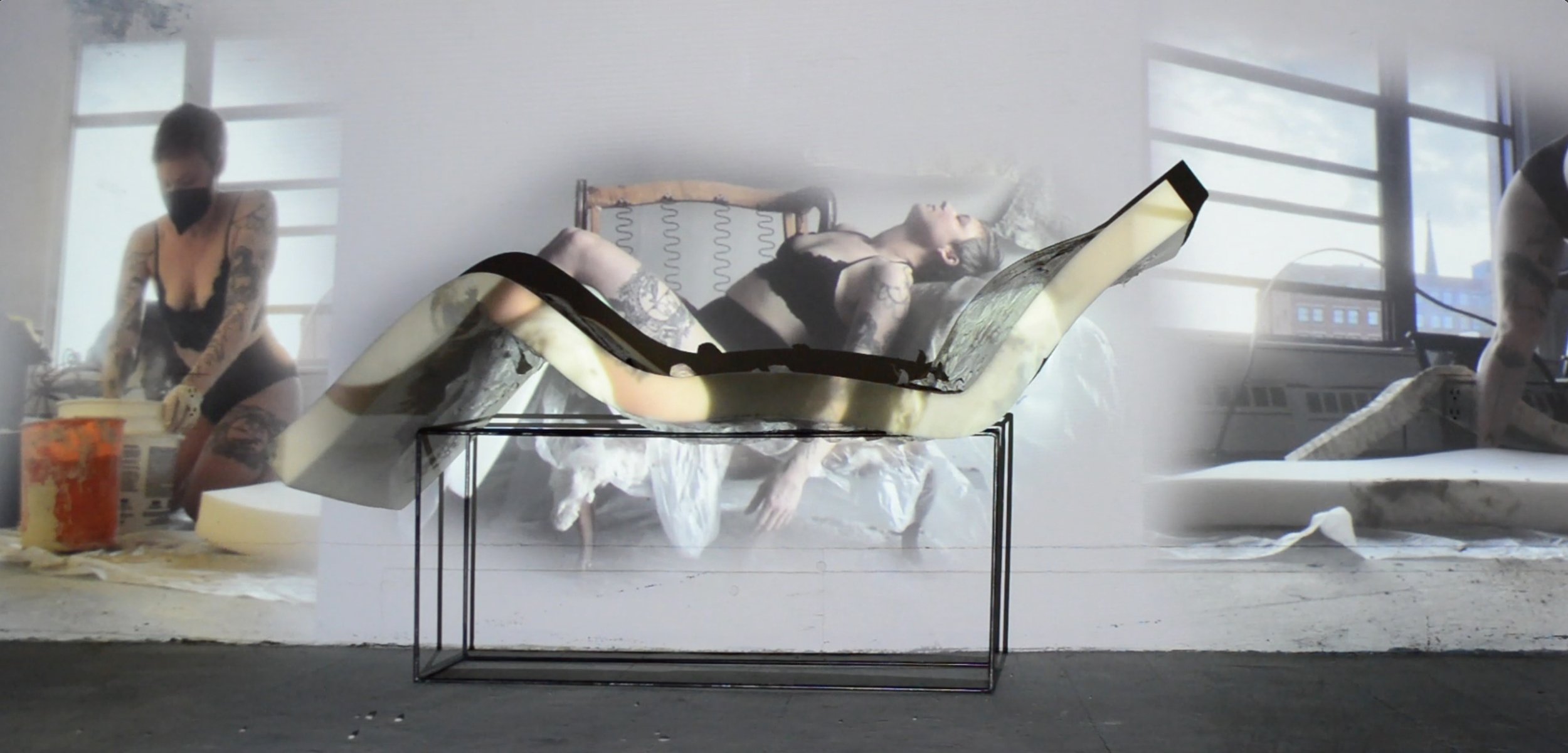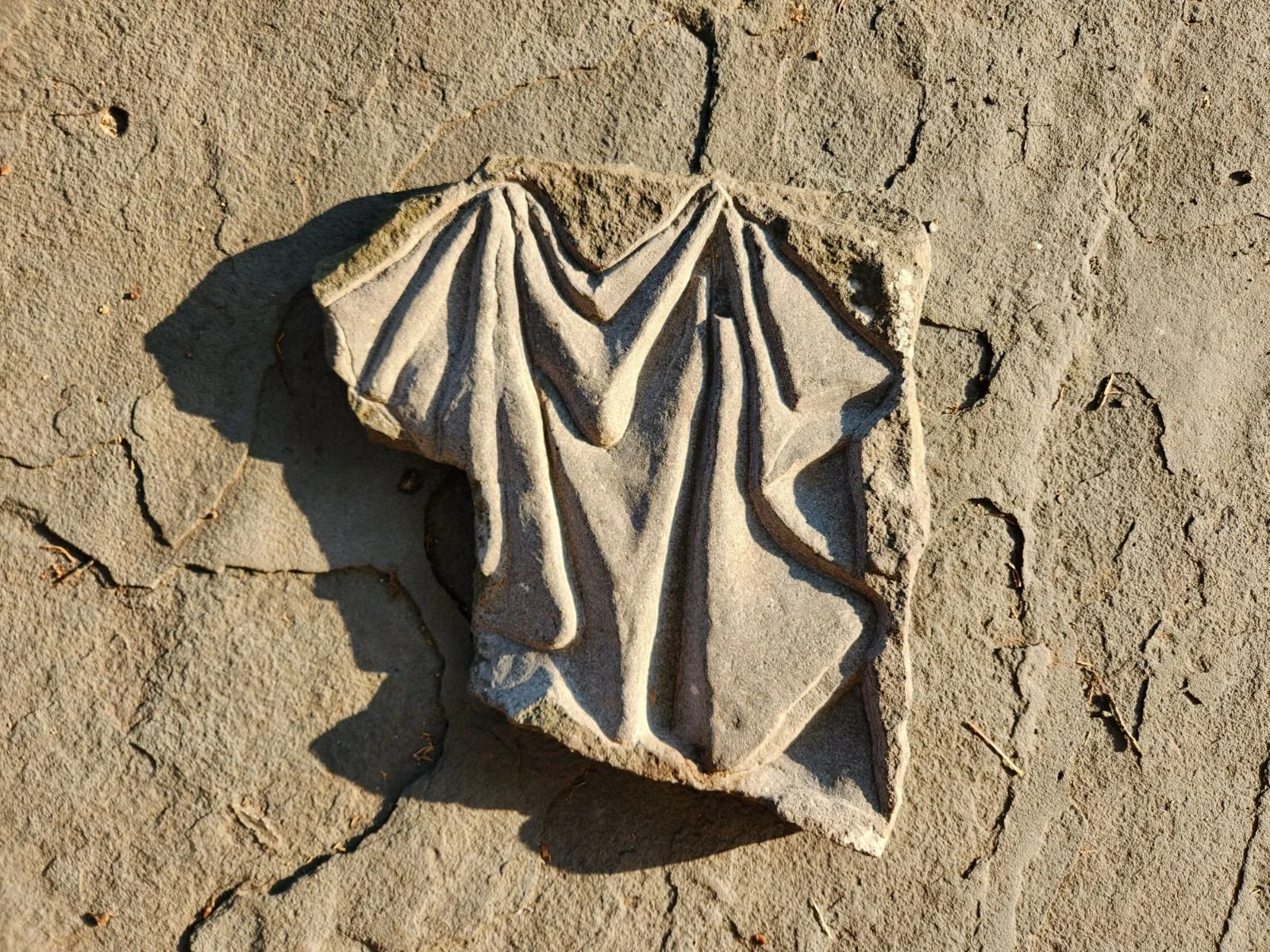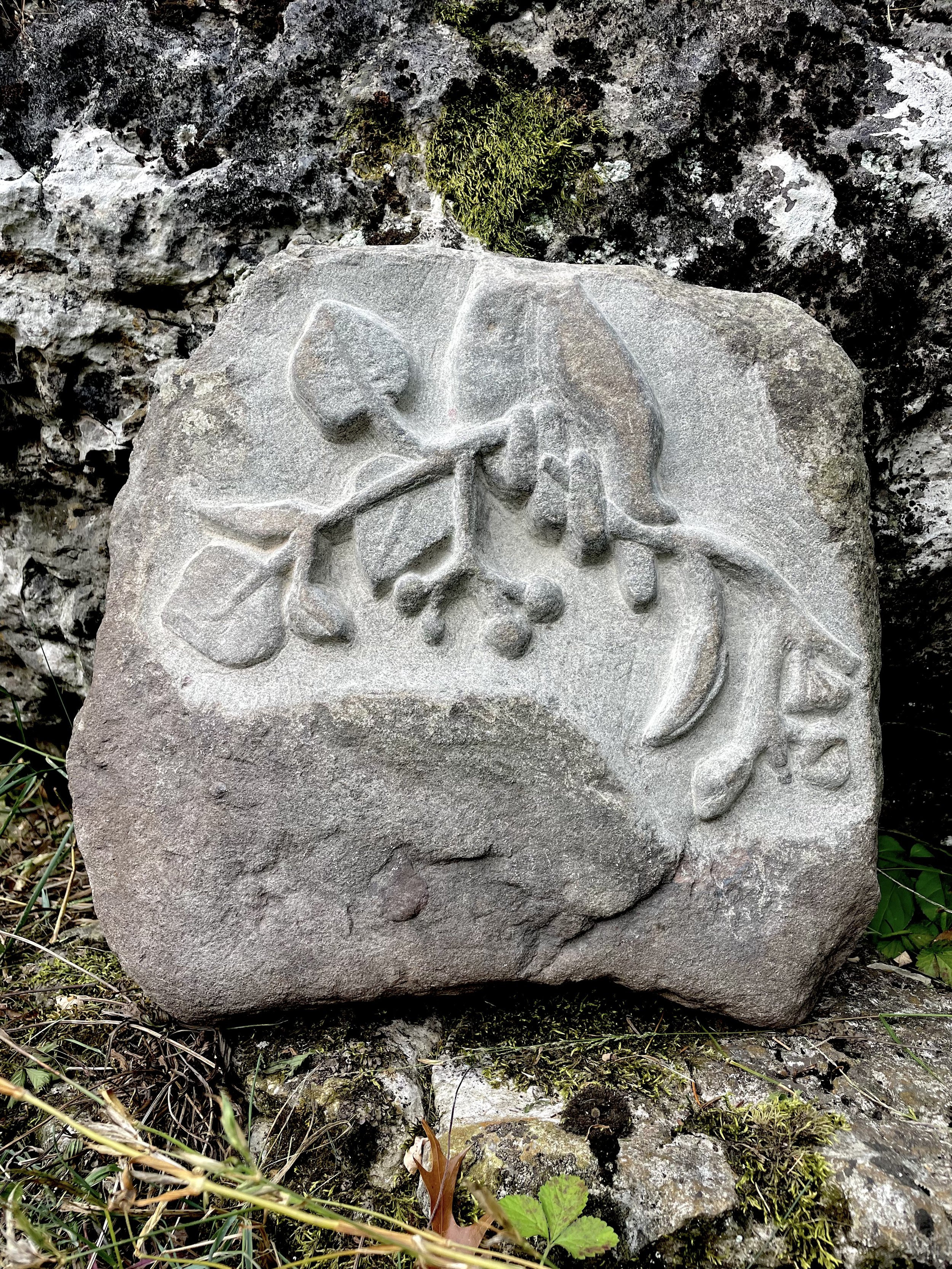
Eulogies in Stone
Another eulogic relief in bluestone from a long gone settler house foundation in the Catskill woods. As I continue to meditate on the ecology of my now-home in the Hudson Valley as it was ravaged by colonialism and the extractive settler-colonial industries of bluestone mining which hollowed these hills and leather tanning that deforested the mountain sides and decimated the once-diverse understory, I have been considering the massive Linden trees that once towered in this area.
I found and carved this stone over four days in Tannersville, NY, an epicenter of the tanning industry that polluted these mountain spring waterways and clear cut the forests. Imagining what was via the relics of what had been is a way for me to reckon with the short, violent, colonial history that decimated the ecosystems and culture of this valley over a span of a few hundred years. This rock is 350 million years old.
Linden varietals are sacred to cultures all around the world—the trees are planted next to Buddhist temples in China; they are a sacred tree in Slavic lore, to be treated as human; Chiron’s mother was said to have been turned into a linden tree after giving birth to the wounded healer; the trees were a place to meet for matters of justice in pre-Christian European cultures. Dana O’Driscoll writes, “The Ojibwe would use it to lash together wigwams and medicine lodges. The Algonquin peoples were known to use Linden to weave straw mats that were used as a roof for shelters. The Menomeni used it so extensively that H. Smith reports that balls of the twine were kept in every household. The Algonquin also used the inner bark in thin strands as a suture to sew up wounds. The Mohawk created a linden tea with branches from Linden and Staghorn sumac that was prepared in a special way for aiding childbirth, and the Iroquois also used the cambium as an emergency wound bandage.” The bark is delicious to a wide array of critters. Linden trees are sometimes known as “humming trees” for all the pollinators her flowers attract. They are great shade trees on a hot summer’s day. (2024)
Meditations on Rocks
*
Meditations on Rocks *
I wrote about human relationships with stones for the 1080 Press Newsletter in 2024
Patrick Modiano describes concrete as “the color of amnesia”, what I interpret as a loss of place.
Using the visual language of headstones to turn an old slab of bluestone into a shroud, that was quarried around the time of the Hudson Valley’s initial colonization. This slab of rock had been used as the foundation for a long-since collapsed house. Bluestone is quarried for concrete, building up the surrounding urban landscape and hollowing out the hillsides. (2023)

Holy Ghosts
As I explore notions of “holding”, I am confronted with the assigned woman’s body as a site for grief and care, a space of pain and healing. In Michaelangelo’s Pieta, Mary is a chair—her body has been newly aligned by the sculptor into one of an armature, out of bodily proportion to what is physically possible and concealed by excessive drapery. Mary holds: presence and absence; life and death; human and deity. Mary embraces and impresses. There is a cacophonous simultaneity in the holding of these dualities that I am interested in exploring in my own sculpture.
(2022)






